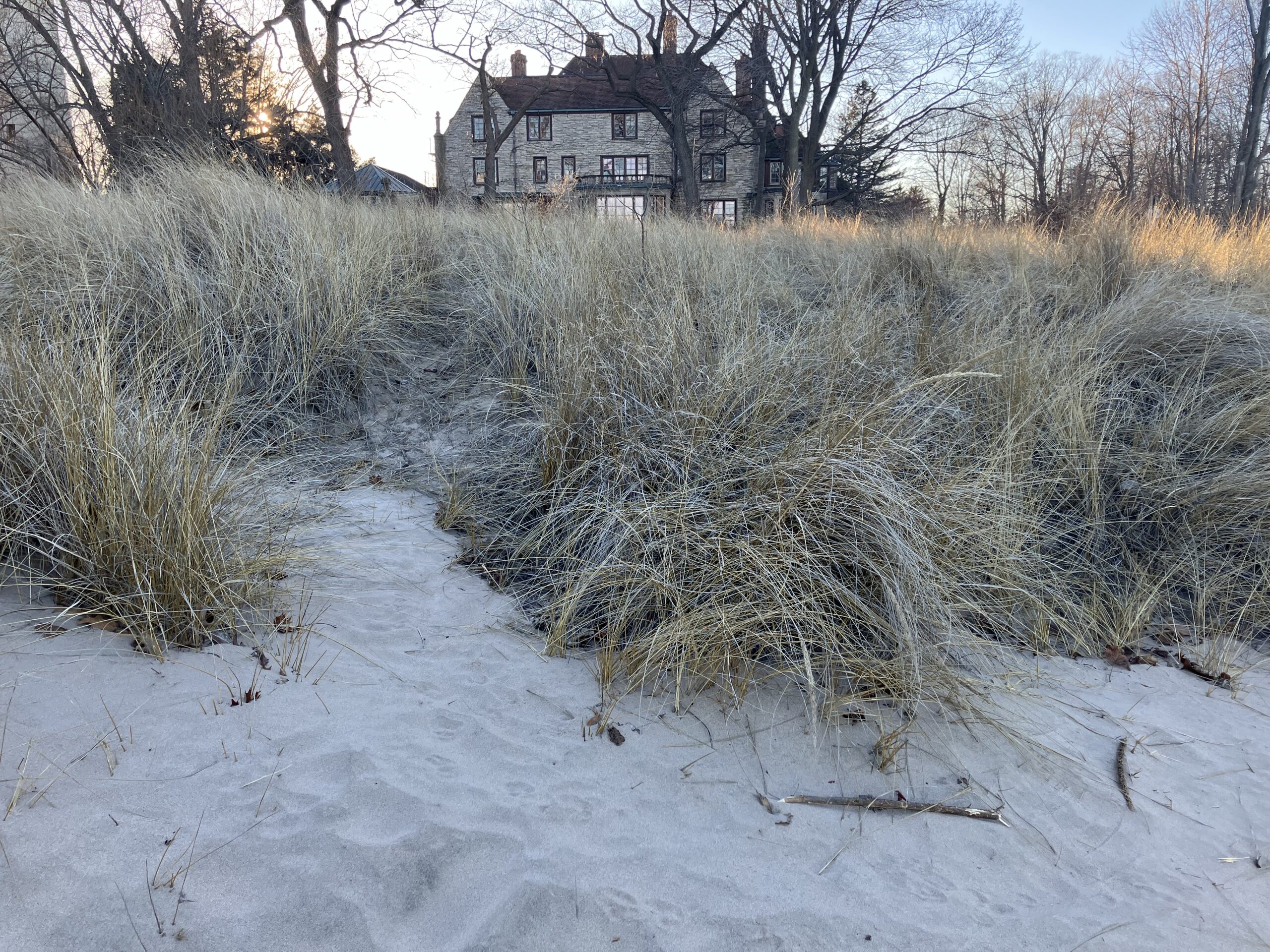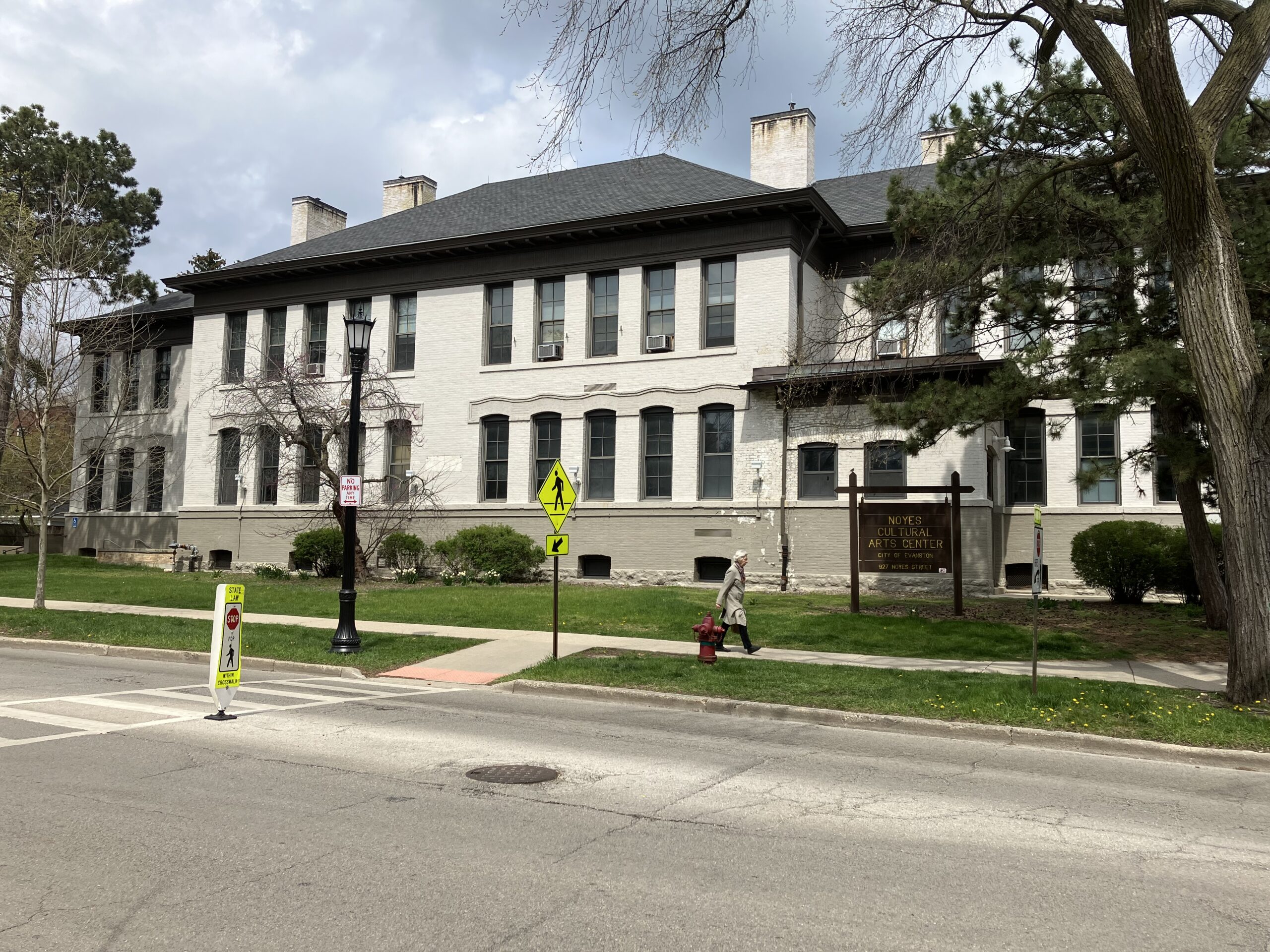By Bob Seidenberg
The grounds around the city-owned Harley Clarke mansion at 2603 Sheridan Road, given scant attention in the original statement of significance for the historic landmark property, have received a significant boost in status.
Members of the Evanston Preservation Commission unanimously approved an amended statement of significance for the mansion at their Feb. 13 meeting. A statement of significance details why a particular area or property should be preserved.
The original statement of significance for the Harley Clarke property was devoted almost entirely to the details of the mansion, including less than a sentence to the grounds “retaining fragments of the original design of the Midwest’s premier landscape architect, Jens Jensen.”
The new statement goes into more depth about the background of Jens Jensen, the renowned landscape architect who drew up the original design for the site in 1928.
It goes into full detail, moreover, about a dune constructed more than 50 years later and the efforts of Donn Werling, Evanston’s first city naturalist, to bring the project into being at a crucial time in the city’s environmental history.
Commissioner Charles Smith urged the commission to make the change. Smith is a longtime volunteer caretaker of the grounds as well as president of the Jens Jensen Gardens in Evanston, a group dedicated to restore Jensen’s vision for the site.
At the group’s Jan. 30 meeting, Smith said that while the mansion is featured in support of the property’s designation as an Evanston historic landmark, the landscaping around the structure hasn’t received nearly as much attention. Further, the dune, which marked an important point in the city’s ecology movement, isn’t referenced at all.
“One of the features that is very vulnerable right now is the dunes,” he said.
The action is timely in that regard, with the city recently stepping up the process to attract a new leaseholder the site, which has been mostly shuttered since 2015. The statement of significance is expected to be included in the packet that goes to applicants in the request for proposals for the site that is expected to be sent out later in the year.
The amended statement notes that “the site’s integrity of setting is dominated by, and dependent on, a landscape designed by Jensen, then the Midwest’s premier landscape architect, in 1928, a progenitor of the Prairie School.”
In 1980, Werling, who was then the city naturalist, a position that doesn’t exist today, oversaw the project, wrote Smith and City Planner Cade W. Sterling in a memo providing rich background for the change. The two also collaborated on writing the amended statement of significance.
Dune ‘a respite from human interference’
The dune provided “a dramatic backdrop to a recreational sand beach on Lake Michigan,” they wrote in the memo. “Viewed from a nearby bluff, the dune evokes a sense of wilderness available to anyone to anyone in daylight or moonlight, and softening and naturalizing the transition between the beach and the Harley Clarke mansion.”
Werling, who would later go on to an academic career and then serve as director of the Henry Ford Estate, one of the most significant works of Jens Jensen and Prairie Style, oversaw the execution of the plan, they noted.




